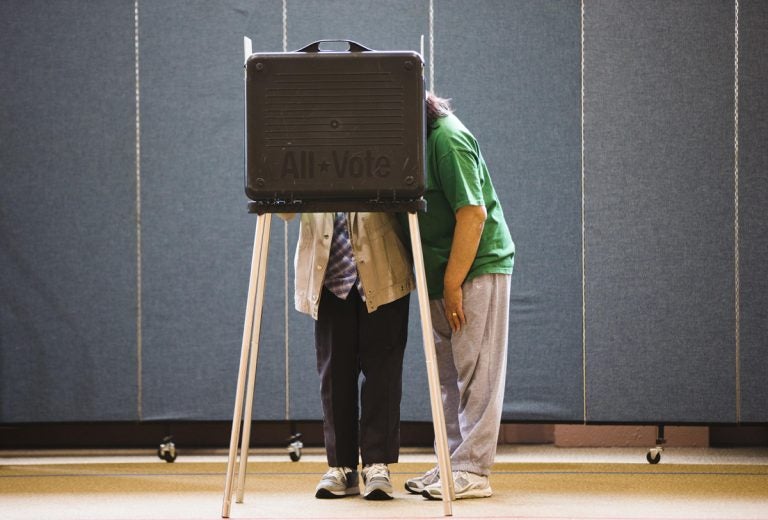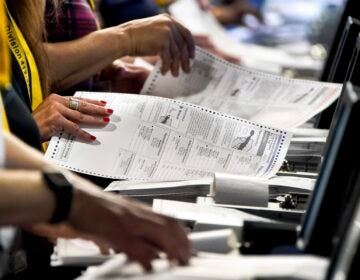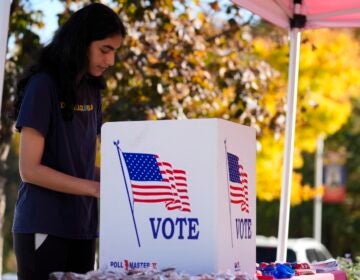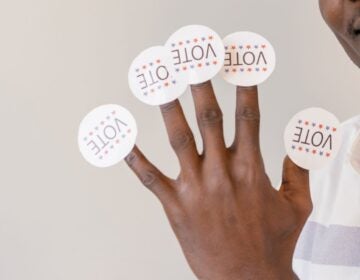Off-year election, political frustrations contribute to dip in Pa. voter registration
It's about one month until Election Day, and voter registration is down by about 2.5 percent in Pennsylvania compared with 2016.

A woman assists her mother filling out her ballot in a church polling place in Lancaster, Pa. (AP File Photo/Matt Rourke)
Three weeks until Election Day, voter registration is down by about 2.5 percent in Pennsylvania compared with 2016.
Both major political parties — Democrats and Republicans — have lost members across the commonwealth.
Terry Madonna, director at the Center for Politics and Public Affairs at Franklin and Marshall College, said a drop in voter registration after the 2016 presidential election follows a typical pattern.
“Voter registration spikes during presidential elections,” said Madonna. Then registration tends to dip, he said, and interest in politics wanes when there are mostly local and judicial races on the ballot.
Chris Borick, a political science professor at Muhlenberg College, said public opinion polls show there may be another reason to factor for the decline in registration.
“There really is a deep feeling of dissatisfaction with the political system, and parties are a big part of that,” said Borick. “The Democrat and Republican brands are certainly not in their best position.”
Nationally, Borick said, there’s been some movement for voters to become “non-affiliated” or to choose a minority party, but that’s more rare in Pennsylvania because of its closed primary system. Only party members are allowed to vote in primary elections.
Closing the gap
The latest round of voter registration also follows longer-term trends in Pennsylvania: shrinking margins between the major parties.
Registered Democrats outnumber registered Republicans by more than 800,000 voters. But that advantage has slowly narrowed since the 2008 presidential election of Barack Obama when Democrats had about 1.2 million more registered voters.
“Republicans have been closing the registration gap in counties that historically had large Democratic voter registration edges,” said Madonna. “These are the old mining and mill towns, counties that Trump won pretty handily.”
For 20 years, Borick said, many voters in the southwestern part of the state were Democrats in name only — consistently voting Republican, but not updating their registration status. That changed in the last presidential election.
“Donald Trump and his candidacy pushed a number of those voters to make it official. They wanted to vote in the primary for him,” said Borick.
Looking ahead
Both political analysts expect to see an uptick in Democratic and Republican voter registration leading up to the 2018 midterm elections.
Races for U.S. House and Senate are often considered a referendum on the presidency, and there’s a statewide race for governor.
The outcome of those elections, said Madonna, depends on which party’s voters become more interested, active and motivated to show up at the polls.
WHYY is your source for fact-based, in-depth journalism and information. As a nonprofit organization, we rely on financial support from readers like you. Please give today.






